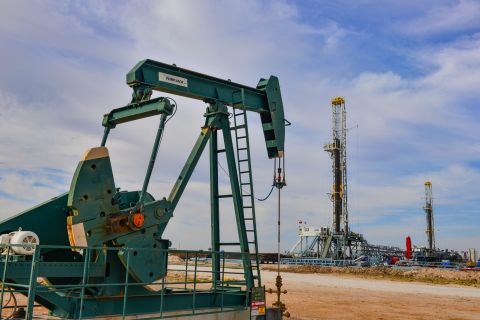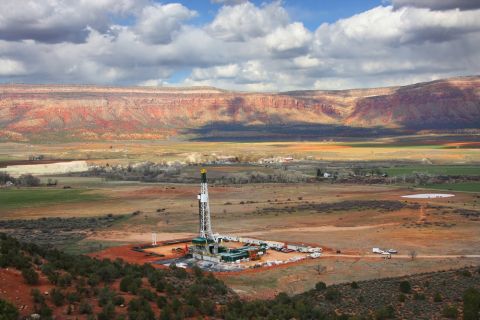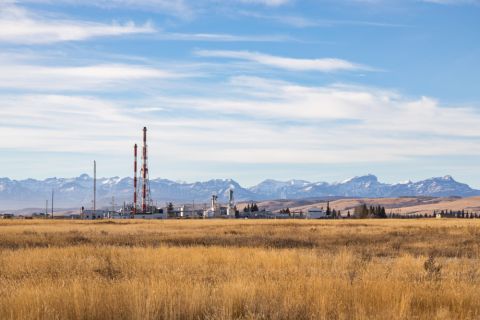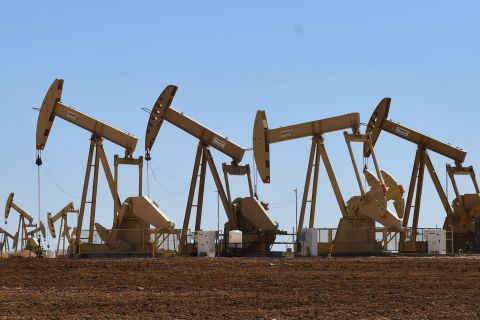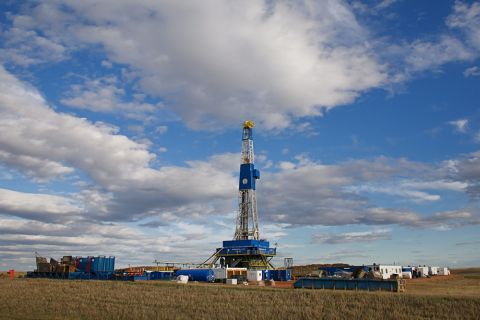Learn more about Hart Energy Conferences
Get our latest conference schedules, updates and insights straight to your inbox.
Brazil’s state-owned Petrobras selected an affiliate of Keppel Shipyard Ltd. to carry out the engineering, procurement and construction (EPC) of the 225,000 bbl/d capacity P-80 FPSO to be located in the Buzios field in the Santos Basin pre-salt for around $2.9 billion.
Incorporation of the P-80 FPSO is part of Petrobras’ larger strategy in the prolific pre-salt formation which includes bringing on 14 new floating units with varying capacities offshore Brazil between 2023 and 2026. The FPSOs support Petrobras’ business strategy and push to focus future growth in reserves and production in the pre-salt while divesting non-strategic assets across its portfolio.
RELATED:
Petrobras Eyes Addition of 14 FPSOs by 2026
The contract for P-80 was awarded to Keppel Offshore & Marine (Keppel O&M), a wholly owned Keppel subsidiary, during an international tender, the Singapore-based company announced August 15 in a press statement. P-80 will be owned by Petrobras with a minimum local content index of 25%.
Financing for the P-80 is structured on “progressive milestone payments and will be cash-flow neutral during its execution lifecycle,” Keppel said. The deal adds to Keppel O&M’s order book but “is not expected to have a material impact on the net tangible assets or earnings per share of Keppel Corporation Ltd. for the current financial year,” the company said.
Keppel O&M will utilize its centers in Singapore, Brazil, China and India to carry out the design and engineering. Fabrication of the topside modules, which weigh about 47,000 metric tonnes, will be spread across Keppel O&M’s facilities in Singapore, China and Brazil. Integration and commissioning will be completed in Singapore. Hull construction and accommodation will be carried out by CIMC Raffles in China while Keppel O&M plans to undertake the final phase of offshore commissioning work when the FPSO arrives at Buzios.
P-80 FPSO
Brazil’s offshore Santos Basin is home to the most promising offshore exploration sites in the world, Petrobras stated its annual report. The basin contains the southern and most prolific part of Brazil’s pre-salt region. Petrobras’ activities in the Santos Basin pre-salt commenced in 2000 with the acquisition of blocks and first production from the region later flowed in 2009.
Petrobras’ main blocks – the Campos Basin and Santos Basin – and fields are located in the offshore pre-salt polygon, which occupies an area of 150,000 sq km. The company has exploration and production rights to 16% of this area. New exploration areas in the pre-salt can only be granted under Brazil’s production-sharing regime.
The P-80 is scheduled for completion in the first half of 2026. Once online, it will be the ninth unit to be installed in Buzios and the 28th FPSO to operate in the pre-salt formation, Petrobras announced Aug. 15 in a separate press statement. The P-80 will be the second built by Keppel O&M for Petrobras for deployment in Buzios. The first vessel, the P-78, is currently under construction by Keppel Shipyard.
In addition to its large oil production capacity, P-80 will be have a water injection capacity of 250,000 bbl/d, gas processing capacity of up to 12 MMcm/d and capacity to store 2 MMbbl of oil, according to Keppel. The vessel entails the interconnection of 14 wells, seven of which are oil producers and seven injectors, Petrobras said Aug. 15 in a separate press statement.
Buzios offers Petrobras “substantial reserves, low risk and low lifting cost,” the Rio de Janeiro-based national oil company said. By 2030, Petrobras expects production from Buzios will approach 2 MMboe/d. At that time, the field will become the company’s highest-producing asset.
Presently, four platforms are operating in Buzios (P-74, P-75, P-76, and P-77), while four units are under construction (FPSO Almirante Barroso; FPSO Almirante Tamandaré; P-78, and P-79).
Petrobras operates the Buzio field with a 92.6% stake, with CNOOC and CNODC as partners with 3.7% each.
RELATED:
Petrobras Reports Sequential Decline in Second Quarter Production
Vanguard technology
Petrobras operates the world’s largest carbon capture, utilization and storage program, according to Keppel. The P-80 and the P-78 vessels will incorporate green features such as carbon capture and carbon reinjection back into the reservoir. “Both FPSOs are designed to maximize carbon reinjection and minimize the need for gas flaring,” Keppel said.
Additionally, the P-80 will have energy recovery systems for thermal energy, waste heat and gas, as well as seawater deaeration to reduce fuel consumption and carbon emissions.
The P-80 is part of Petrobras' new generation of platforms that yield high production capacity and incorporate innovative technologies to cut down on CO2 emissions, the company said. The P-80 will utilize closed flare technology, which increases the use of the gas and prevents it from being burned into the atmosphere.
The FPSO will also utilize another innovation for methane gas detection, which will assist to prevent or mitigate the risk of leaks.
Lastly, the P-80 will have a digital twin. “The innovation consists in the digital reproduction through a virtual unit identical to the physical platform, allowing several remote simulations and virtual operational tests, simulating several scenarios in a safe way,” Petrobras concluded.
Recommended Reading
Mighty Midland Still Beckons Dealmakers
2024-04-05 - The Midland Basin is the center of U.S. oil drilling activity. But only those with the biggest balance sheets can afford to buy in the basin's core, following a historic consolidation trend.
Uinta Basin's XCL Seeks FTC OK to Buy Altamont Energy
2024-03-07 - XCL Resources is seeking approval from the Federal Trade Commission to acquire fellow Utah producer Altamont Energy LLC.
Analyst: Chevron Duvernay Shale Assets May Sell in $900MM Range
2024-01-29 - E&Ps are turning north toward Canadian shale plays as Lower 48 M&A opportunities shrink, and Chevron aims to monetize its footprint in Alberta’s Duvernay play.
Life on the Edge: Surge of Activity Ignites the Northern Midland Basin
2024-04-03 - Once a company with low outside expectations, Surge Energy is now a premier private producer in one of the world’s top shale plays.
Silver Hill Energy Enters Bakken with Liberty Resources Acquisition
2024-01-31 - Silver Hill Energy Partners LP is getting into the Bakken in North Dakota through the acquisition of Liberty Resources II.


